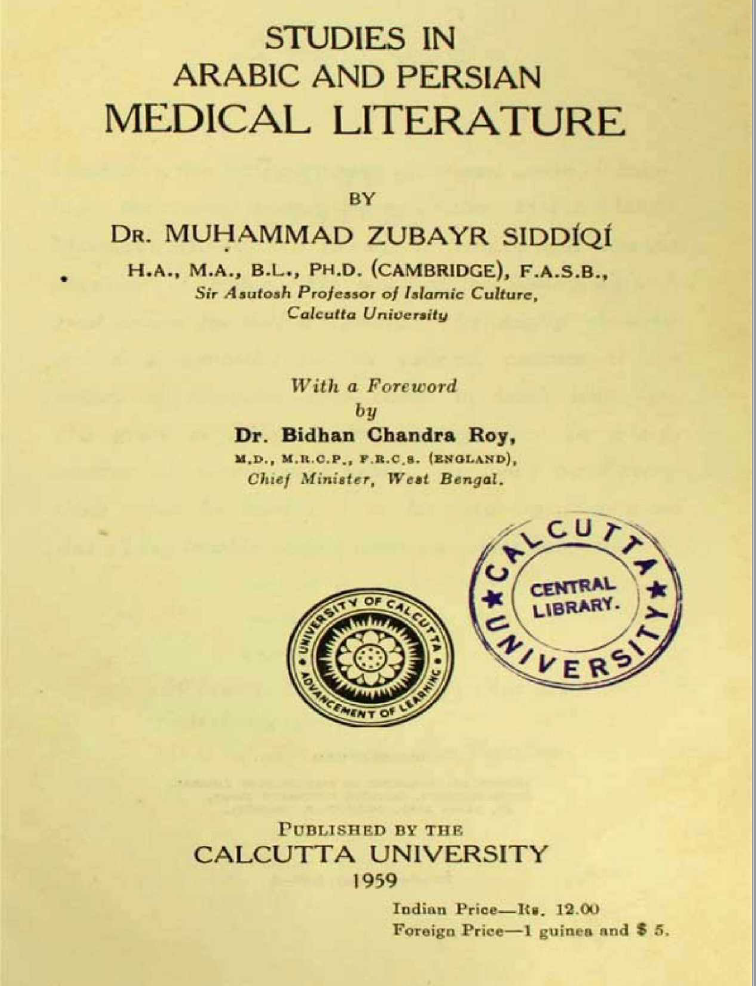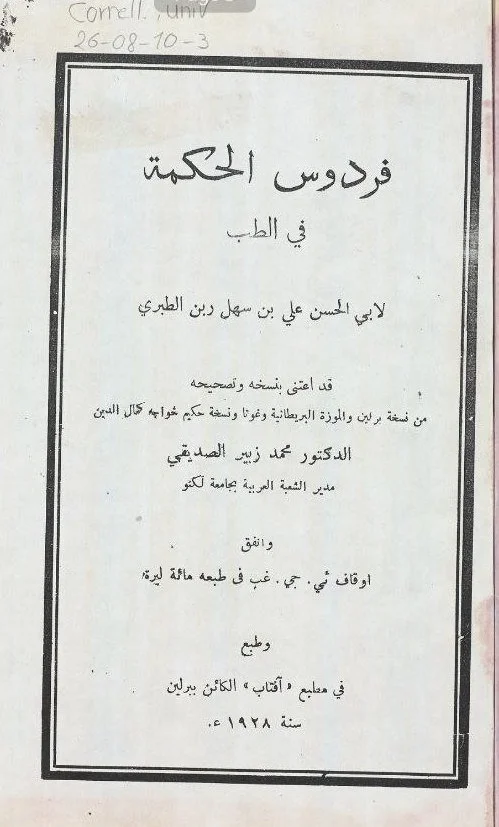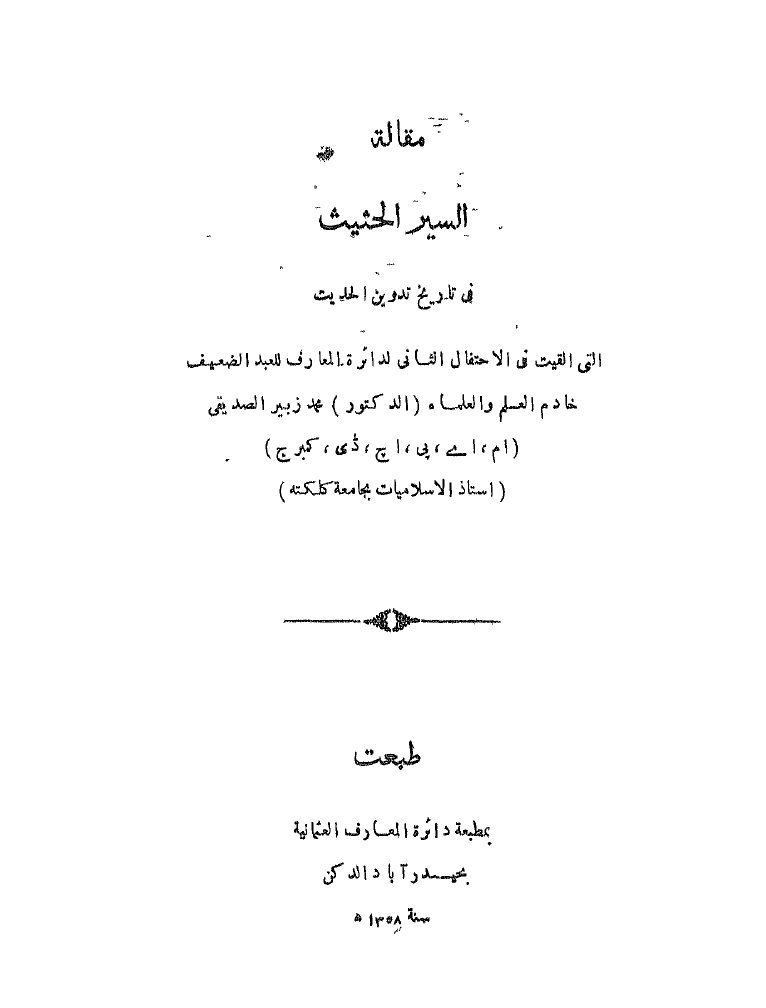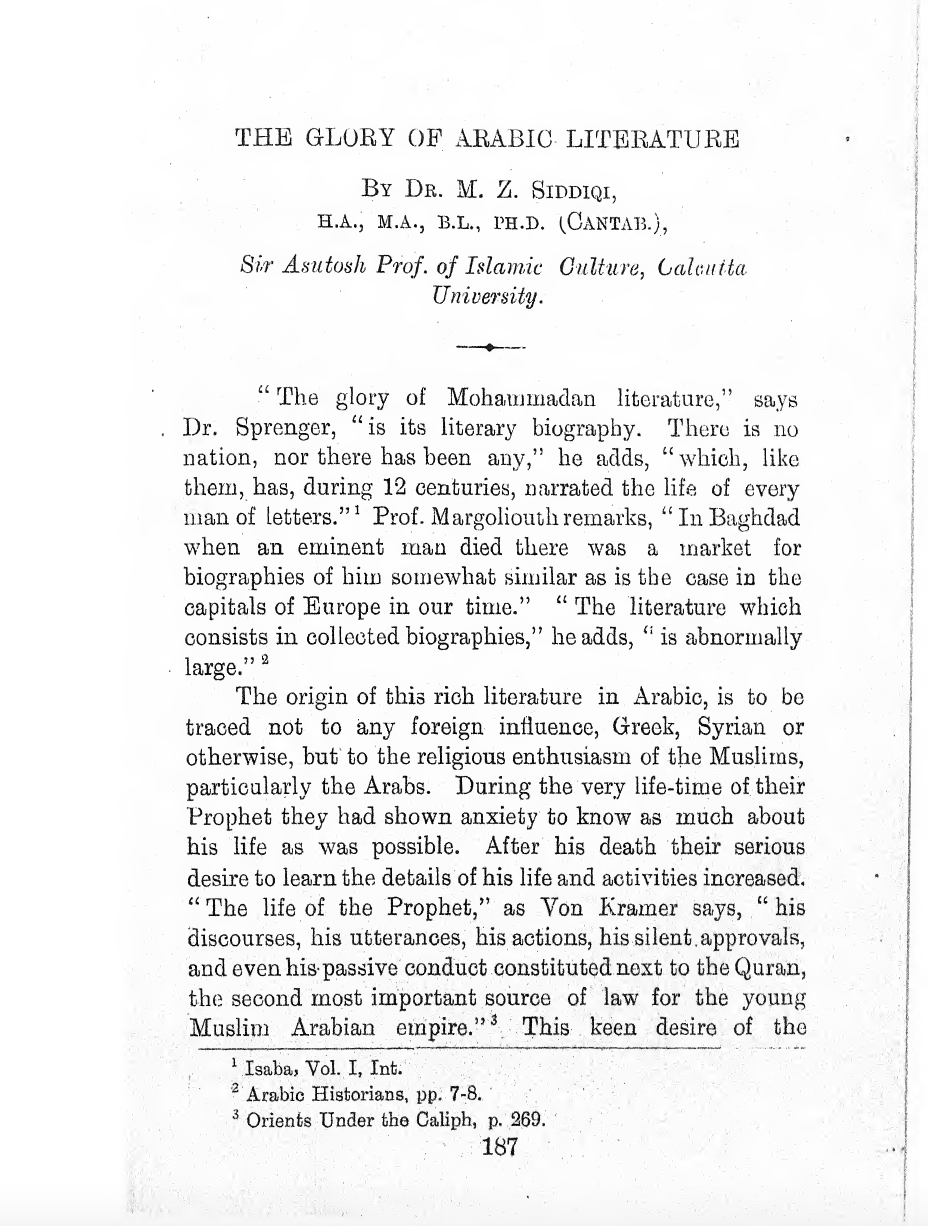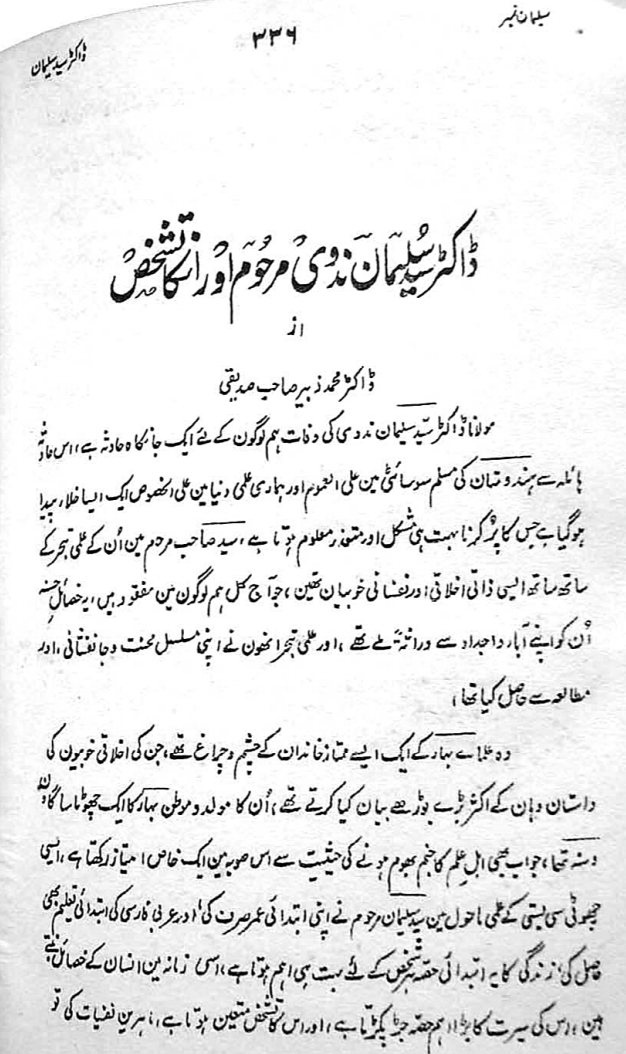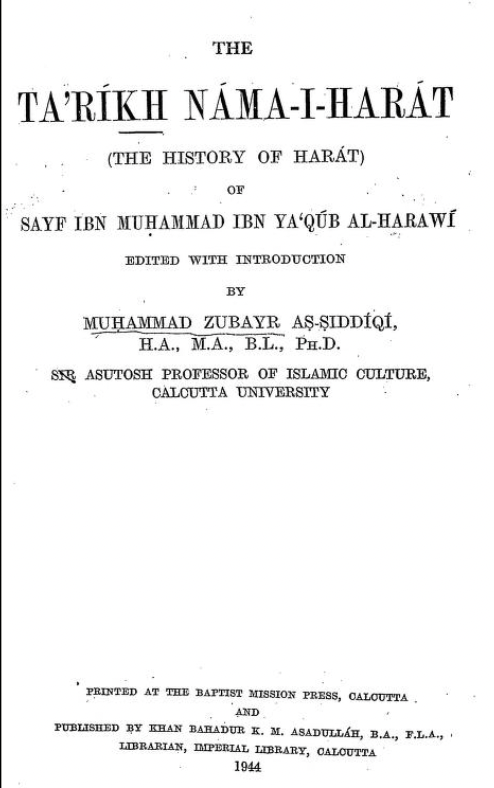A Biographical Sketch of Professor Muhammad Zubayr Siddiqi
Prior to their boom in recent decades, works of English hadith literature could be counted on one hand. Many of the authors of these works passed away within the decade, such as Zafar Ishaq Ansari (d. 2016),[1] Muṣṭafā al-Aʿẓamī (d. 2017), and Fuat Sezgin (d. 2018). One of the earliest and most accessible and informative primers of hadith studies in English is Hadith Literature: Its Origin, Development & Special Features by Professor Muhammad Zubayr Siddiqi published in 1961.[2] By Siddiqi’s own admission, when authoring his introduction to hadith, he knew of only one other introductory study in English: the British Orientalist Alfred Guillaume’s (d. 1965) The Traditions of Islam, but that too was from a Western critical perspective.[3]
The importance of his book Hadith Literature notwithstanding, Siddiqi’s legacy extends beyond this one monograph, despite its status in many circles as the author’s only known work. Despite his incredible work on the veracity of hadith and other disciplines, one would be hard-pressed to locate any relevant information on his life and times. Fortunately, Masʿūd Ḥasan, a close student and disciple of Siddiqi, penned an informative obituary of his teacher in the journal Maʿārif in Urdu.[4] In what follows, I adapt and translate certain sections of his paper with occasional annotations and scans from Siddiqi’s published works.
Life and Works
Muhammad Zubayr Siddiqi was born ca. 1886 in the village of Kumhrar in Bihar, India to a family of scholarly repute. He received his early education from his father, Muḥammad Isḥāq, who was a traditionally trained physician (ḥakīm) and scholar. He then studied the ʿālimiyya curriculum and ancient Greek medicine at Madrasa Ḥanafiyya in Patna and later in Rampur. He then enrolled in the Oriental College, Lahore and graduated in 1912 as valedictorian of his class, passing the Mawlavī Fāẓil exam. From 1914 onward, he studied at Calcutta University, completed his undergraduate studies at Bihar National College, and received an MA from Patna University with such distinction that he was awarded a scholarship to travel to Europe for graduate studies. He then spent some time practicing traditional medicine under his father’s auspices.
In 1922, he set off for England for doctoral studies at the University of Cambridge under the supervision of Edward G. Browne (d. 1926). His dissertation was titled “The Rise of Medical Literature” and was written in Arabic. Browne also assigned Siddiqi the responsibility of editing Abū al-Ḥasan al-Ṭabarī’s medical work Firdaws al-Ḥikma.[5] In 1926, having completed his graduate studies, he was invited by Lucknow University to chair the Department of Arabic and Oriental Studies. Within two years, however, he was offered yet another post, but this time from Calcutta University to chair the Department of Arabic and Persian Studies. This position was to occupy the majority of his academic career. During his thirty-three-year tenure at Calcutta University, Siddiqi held various positions and raised the standard of not only his department but also of the entire university. Although he retired from the university in 1962, he remained preoccupied with other academic pursuits, like authoring books and presenting his research at conferences.
After performing hajj in 1972, his health began to deteriorate. Years of illness could not dissuade him from continuing his academic projects; he would ask his students to read relevant books aloud to him when his poor eyesight prevented him from reading them himself Ultimately, he passed away on March 18, 1976, having lived nearly ninety years. May Allah have mercy on him and elevate his status. He was survived by his wife, three sons, and three daughters. His teachers include ʿAbd Allāh Punjābī, ʿAbd al-ʿAzīz Sahāranpūrī, Muḥammad Najm al-Dīn Dānāpūrī, and Muḥammad Shafīʿ, among others. His students are many, but it is of note that Abū al-Ḥasan al-Nadwī benefited from Siddiqi’s company during his professorship at Lucknow University.
His published works are as follows:
A critical edition of ʿAlī b. Sahl al-Ṭabarī’s Firdaws al-Ḥikma with a detailed Arabic introduction, published by Sonne Press, Berlin in 1928
Al-Sayr al-ḥathīth fī tārīkh tadwīn al-ḥadīth, an Arabic work on the historicity of hadith, published by Dāʾirat al-Maʿārif in 1939
A critical edition of Sayf b. Muḥammad al-Harawī’s (fl. 717 AH) rare historical record of Herat entitled Tārīkh Nāma-i Hirāt, published in 1944 based on a unicum manuscript held in the Imperial Library, Calcutta
Studies in Arabic and Persian Medical Literature, published by Calcutta University in 1959
Hadith Literature: Its Origin, Development & Special Features, originally published in 1961 by Calcutta University and revised by the Islamic Texts Society in 1993, and perhaps Siddiqi’s most prominent book among an English-reading audience
The Social Position of Women through the Ages, based on a series of lectures delivered in 1964
He wrote countless papers for established journals, like Maʿārif, Islamic Culture, Calcutta Review,[6] and Islam Aur Asr-i-Jadeed. He was affiliated in various capacities with prestigious centers of learning and research, such as Nadwat al-ʿUlamāʾ, Dāʾirat al-Maʿārif,[7] Dār al-Muṣannifīn Azamgarh, and Asiatic Society Calcutta. May Allah grant him peace and reward him for his intellectual contributions, āmīn!
———
Appendix
Hereunder are scans of some of his works and journal entries:
Figure 1: Studies in Arabic and Persian Medical Literature.
Figure 2: Firdaws al-ḥikma fī al-ṭibb by ʿAlī al-Ṭabarī (edited).
Figure 3: al-Sayr al-ḥathīth fī tārīkh tadwīn al-ḥadīth (published lecture).
Figure 4: The Glory of Arabic Literature (article).
Figure 5: An obituary on Sayyid Sulamyān Nadwī from the Maʿārif journal.
Figure 6: Tārīkh Nāma-i Harāt by Sayf al-Harawī (edited)
Figure 7: Hadith Literature: Its Origin, Development, Special Features, and Criticism (1st print in 1961).
___
Notes
[1] Ansari’s 1968 dissertation, “The Early Development of Islamic Fiqh in Kūfah with Special Reference to the Works of Abū Yūsuf and Shaybānī,” traces the evolution of law in the formative period, as the title clearly suggests. However, given the indispensable role of hadith vis-à-vis law, the dissertation is interspersed with several formidable arguments on the veracity of hadith.
[2] This is not to absolve the book of any shortcomings, which would be understandable for a work of this nature. For instance, he cites the hadith on the height of Prophet Adam (peace be upon him) recorded in the Ṣaḥīḥayn as an example of weak or forged hadith that made their way into the canonical hadith collections. He bases this judgment on Ibn Ḥajar’s reservations concerning the implications of this hadith. However, Ibn Ḥajar’s comments demonstrate that he merely took a noncommittal stance to understanding the hadith; he did not deem the hadith weak, let alone forged. See Muhammad Zubayr Siddiqi, Hadith Literature: Its Origin, Development & Special Features (Cambridge: Islamic Texts Society, 1993), 114–15.
[3] This is stated in the author’s preface of the original 1961 edition of Hadith Literature. However, the revised 1993 edition does not contain this phrase. Surveying the extant hadith literature in English in 1977, Muṣṭafā al-Aʿẓamī noted that the “The only one in English which can claim scholarly merit is one by Processor Zubair Siddiqi.” See Muṣṭafā al-Aʿẓamī, Studies in Hadith Methodology and Literature, i.
[4] Masʿūd Ḥasan, “Wafayāt: Dr. Muḥammad Zubayr Siddiqi,” Maʿārif 177, no. 4 (1976): 382–97.
[5] Masʿūd Ḥasan’s obituary accidently dates the authorship of Firdaws al-Ḥikma as 850 of the Hijri rather than Gregorian calendar.
[6] This includes “An Early Arabian Author, on the Indian System of Medicine,” The Calcutta Review 41 (1931): 277—83.
[7] This includes “Aḥādīth-i Islām,” Maʿārif 31, no. 2 (1933): 85–94 and “Sayyid Sulaymān Nadwī marḥūm awr unkā tashakhkhauṣ,” Maʿārif 75, nos. 5–6 (1955): 336–43.


